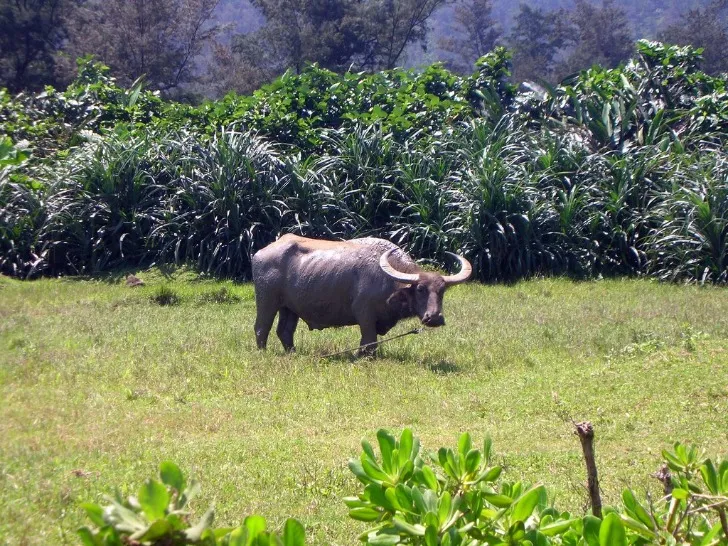Why do beavers build dams?
She spent nine years working in laboratory and clinical research. A lifelong writer, Dianne is also a content manager and science fiction and fantasy novelist. Dianne features science as well as writing topics on her website, jdiannedotson.com.
These nutrients help feed the juveniles after the yolk sac has been digested. Finally, beaver dams keep the water clear which favours all salmonoids. The hope is that beavers who wander by or are brought in will choose to live there and take over construction and maintenance of the dam. Historically, beavers have been hunted for their fur, meat, and castoreum.

If you have ever wished you had more hours in a day, you might envy beavers. While humans operate on a 24-hour day length, generally nocturnal beavers do not. They live primarily under water in low light in their lodges, Teeth of herbivores which changes their natural circadian rhythms. Therefore the length of a beaver day tends to range from 26 to 29 hours. Beavers stand apart from other large aquatic rodents such as the muskrat and the nutria.
The beaver’s disruption is not limited to human geography; beavers can destroy nesting habitat for endangered species. Traditional solutions to beaver problems have been focused on the trapping and removal of all the beavers in the area. Of course, beavers may consume small amounts of wood when they eat bark and twigs off trees.
Precisely, they only consume some tree parts, preferably the cambium, the soft inner bark. Beavers are nocturnal animals and usually look for food at night. In any case, they spend most of the day eating and building dams. The dams are not the homes of beavers; they build lodges to live in, give birth, raise young and store food. These cleverly engineered lodges can be over 6 feet high and as wide as almost 40 feet! The lodge contains an entrance underwater that the beavers can access quickly, and climb through their passages to various rooms.

However, generally, only one family of beavers live in one area (they’ll even fight other families that wander into their territory). However, beavers that live in regions with moderate climates often don’t need to store food. Fish and meat – Never expect beavers to consume fish, meat, and meat products. These animals are herbivores (strict vegetarians), so you will never see any of them eat such food. Thanks to specific microorganisms in their cecum, beavers have a unique ability to digest cellulose. While other mammals can’t decompose this nutrient at all, these rodents can digest about 30% of consumed cellulose.
They prefer the bark and leaves of certain trees, but they also enjoy soft-fiber plants as well. They instead will build dens in high banks, with underwater entrances. Beavers have interesting ways to communicate, such as the tail slap on the water for warning others. The scent from their castor glands also allows beavers to communicate information when the animals rub the scent on mounds near their homes. Introduced to an area without its natural predators, as in Tierra del Fuego, beavers have flooded thousands of acres of land and are considered a plague.
In most cases, they do it every few years, which is actually excellent for both these animals and the environment. Berries – Beavers won’t happily eat most berry plants from wetland and blackberry canes. Unlike other rodents, beavers are picky eaters with a specific taste for food. They never eat dirt and soil or steal garbage from someone’s trash can.
Beavers enjoy eating leaves, twigs, and bark from various deciduous trees, especially aspen and poplar. They also like soft plant foods such as clover, cattails, shrubs, apples, and even beans and corn. Beavers are hunted by most large carnivorous animals, though the exact predators they face will vary depending on the region they live in. As the wetland fills up with plant debris and dries out, pasture species colonize it and the wetland may eventually become a meadow suitable for grazing in a previously forested area.

Their used trees also provide nesting habitat for herons and other birds. Beavers choose dam locations based on the sound of flowing water. They make watertight dams that drastically alter aquatic bodies such as rivers and streams and ponds. Beavers take sticks, reeds, saplings and branches, and they use mud as a caulking material to build their dams.
Beaver ears contain valves that shut when they go underwater, and they have good hearing. Beavers rank second only to the capybaras of South America in rodent size. They can be 3 to 4 feet in length and as tall as a foot and a half. A typical beaver weighs in the range of 40 to 60 pounds, and the largest recorded beaver weighed a startling 110 pounds! Finally the meadow will be colonized by riverine trees, typically aspens, willows and such species which are favoured by the beaver.
Muskrats have long, flattened tails and are smaller than beavers. Nutria tails are roundish, and they tend to be in between a muskrat and beaver in size. Agriculture introduces herbicides and pesticides into streams.

Beavers are essentially large rodents; they are the hunted, not the hunters. They have plenty of natural predators in the wild, including bears, wolves, wolverines, alligators, coyotes, and even hawks. Beavers maintain and repair their lodges and dams constantly to keep them safe and sound for every season. Richard Brazier is a professor of physical geography at the University of Exeter.

How beavers eat and how they engineer their surroundings play a role in their importance to the environment. Beaver ponds can cause the removal of nutrients from the stream flow. Farming along the banks of rivers often increases the loads of phosphates, nitrates and other nutrients, which can cause eutrophication and may contaminate drinking water.
Beavers build dams and lodges using tree branches, vegetation, rocks and mud; they chew down trees for building material. Their infrastructure creates wetlands used by many other species, and because of their effect on other organisms in the ecosystem, beavers are considered a keystone species. Adult males and females live in monogamous pairs with their offspring.
Interestingly, while these structures guard beavers against large predators in other parts of the world, they’re often not put to the test in the UK. As I have already mentioned, you can recognize two beavers types with similar eating habits. You should not rely on any information contained on this website, and you use the website at your own risk. We try to help our visitors better understand forest habitats; however, the content on this blog is not a substitute for expert guidance. Beavers can run on land, but that is not their greatest skill.

